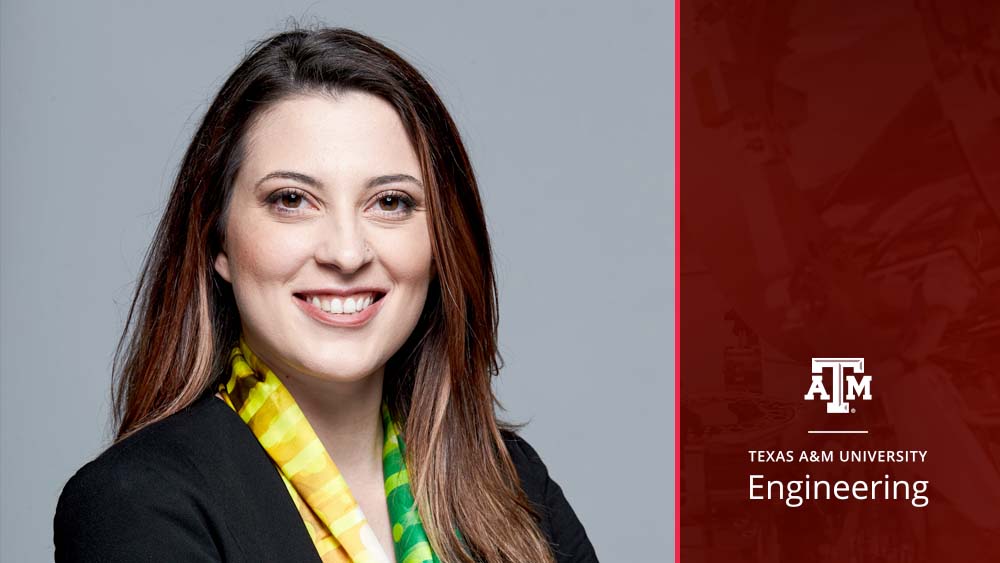
Incoming doctoral student Latifah Maasarani has taken a nontraditional path to the Department of Biomedical Engineering at Texas A&M University. Along the way, she has proven her technical skills in optics and was recently named part of the National Science Foundation's (NSF) Graduate Research Fellowship Program.
Maasarani also received the 2021 National Excellence Fellow position, a department initiative to support students who intend to pursue translational research that impacts the biomedical engineering industry.
She met her principal investigator, Dr. Kristen Maitland, at an optics and photonics conference in 2017. Maasarani said she was quickly drawn to Maitland's research and thought her translational focus, along with Maitland's company, could help Maasarani learn more to accomplish her goals of becoming a biotechnology entrepreneur.
"There's an opportunity to interact with doctors to make your product fit them versus saying, 'We're scientists and we have the solution,'" Maasarani said. "That's something I want to experience."
While a doctoral degree is not a requirement for an entrepreneurial career, Maasarani said she didn't pursue engineering until she was 20.
"I think that there's more for me to learn; there are more skills for me to develop, and I just believe there's more that I want to do to prepare myself to be a leader in my field," she said.
Ever since she started her engineering training, Maasarani said she chose to study optics and photonics. Her research focuses on developing microscopy methods using light to help solve problems in biomedical spaces.
"Where I see that combining with entrepreneurship is the idea of having that translational focus," she said. "We do research that we're hoping to take to the clinic. We work to create devices that can help the patient and not necessarily stay in a lab forever."
Many biomedical imaging methods to date are qualitative approaches that use intensity or color to visualize structure or physiology. However, recent efforts in the imaging space are pushing to extract meaningful information from the pixel values in an image to better monitor properties of the sample such as a cell’s dry mass or optical volume. Maasarani's previous research involved quantitative phase imaging (QPI), a label-free imaging method in which the pixel values in the image quantify how light slows down as it passes through a sample.
"It's fast and precise, which is important for looking at cell morphology. You want to be much smaller and much faster than they are to understand how they are reacting to changes in their environment," Maasarani said.
What interests her is finding ways to combine different imaging techniques to learn more from a single sample and to further validate the use of QPI in optics research. For example, fluorescence resonance energy transfer (FRET), a well-studied practice in imaging, can be used to monitor cell signaling. By incorporating QPI metrics into FRET images, researchers can demonstrate how phase can provide meaningful structural data.
"The goal is to correlate what happens in fluorescence, a method people know and trust, to phase," she said.
While no Texas A&M projects are set in stone yet, Maasarani hopes to bring her experience with QPI into collaborations on stem cell research. With support from the fellowships, she will have flexibility in future research. There are also funds available for professional development, and Maasarani said she is excited to attend and present at a range of conferences.
"I can explore projects that maybe aren't yet funded and spend time thinking of new ideas. I hope to work with Dr. Maitland to come up with a new project idea, write a grant for it and get it funded," she said. "I believe that would be what I want from the NSF, having the freedom to explore new ideas and get them funded. I think that'd be an empowering journey."
After graduation, she plans to take a job at a startup company to get firsthand experience working in the field. Her end goal is to one day create point-of-care diagnostic devices using light.
"Until 20, I wasn't involved in science, and now I feel like I'm not just involved but accepted, and I just hope that other young women who aren't into science yet know it's never too late," she said. "I was very timid to go into this field, but now I realize nontraditional paths are just as good. It is okay to start late. You can and will be successful."